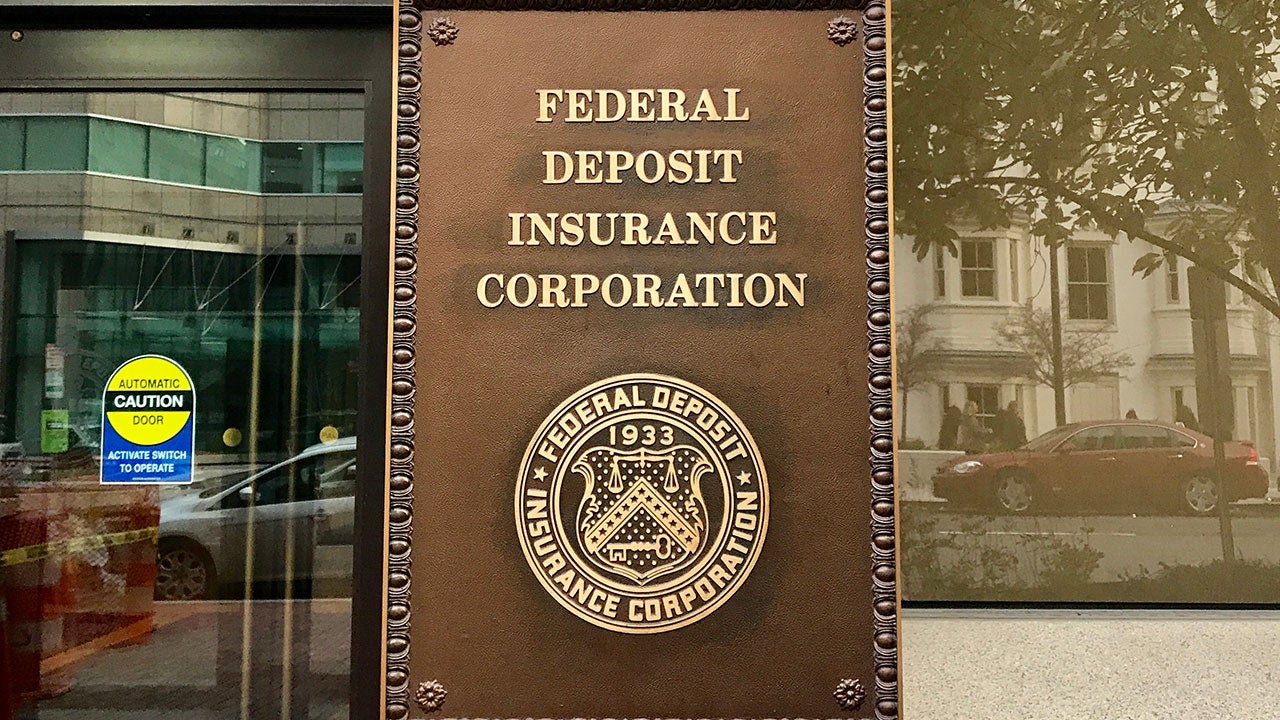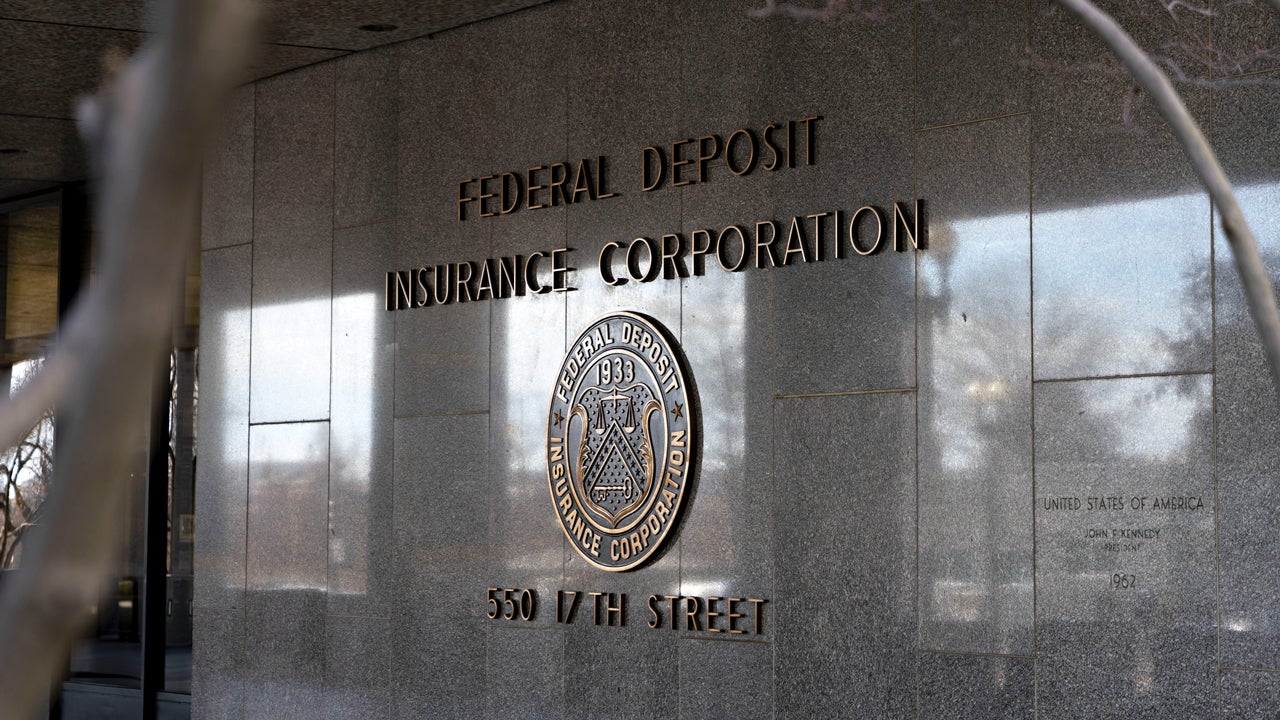What to know about the FDIC and business bank accounts

Key takeaways
- Business bank accounts are covered by FDIC insurance up to the current limits.
- Investment products are not FDIC-protected, even when they’re purchased through the bank.
- It’s important to understand how account ownership types impact your coverage limits.
Imagine waking up to the news that your bank has suddenly closed its doors. What happens to your funds? Are they safe? Your business relies on that bank to pay employees, cover expenses and keep day-to-day operations running smoothly. So, now what?
This is exactly what FDIC insurance is designed to address. While bank failures are rare, they do happen. FDIC insurance exists to protect your deposits. However, there are limits to that coverage, and not every account or institution qualifies. Here’s everything you need to know about the FDIC and your business bank accounts.
What is FDIC insurance?
When thousands of banks went out of business during the Great Depression, many account holders lost their life savings. President Franklin Roosevelt signed the Banking Act of 1933 to rebuild public trust in the banking system, creating the Federal Deposit Insurance Corporation (FDIC). Explaining this move, Roosevelt said, “After all, there is an element in the readjustment of our financial system more important than currency, more important than gold, and that is the confidence of the people.”
Any money you deposit in an FDIC-insured bank is protected up to the insurance limits, even if the bank closes. This protection has proven invaluable, such as during the 2023 collapses of Silicon Valley Bank and Signature Bank. These banks held many business accounts, which were always guaranteed up to the $250,000 limit. But in a rare exception, the FDIC upped the limit and covered the full amount in accounts.
How can you be sure your financial institution is FDIC-insured?
To verify that a bank is FDIC-insured:
-
Check for the FDIC logo on its door, written materials or website.
-
Look for language that mentions the bank is “Member FDIC” on its website.
Does FDIC insurance cover business accounts?
Yes, FDIC insurance generally covers business accounts at FDIC-insured institutions up to $250,000 per depositor, per bank and per ownership type. However, insurance limits may vary depending on the type of account and the ownership structure. Here are the key requirements for coverage:
-
The account is held at an FDIC-insured bank.
-
The business is either a limited liability company (LLC), partnership or corporation. Sole proprietorships and revocable trusts are not considered business accounts but may still be covered.
-
The business account is not structured solely to increase FDIC coverage.
-
The funds are in a qualifying account: savings, checking, money market account, certificate of deposit, cashier’s check, money order or prepaid card.
-
The account is properly registered under the legal name and tax ID number of the business.
How are joint business accounts covered by the FDIC?
When multiple people or entities own a business account, the FDIC insurance coverage can be more than the standard $250,000 limit. The coverage is calculated per co-owner as long as these two things are true:
- Each co-owner is identified in the bank’s records
- All co-owners have equal withdrawal rights.
For example, if two business partners own a single account, each partner is insured up to $250,000, effectively doubling the coverage limit to $500,000.
What types of business bank accounts are covered by the FDIC?
Generally, the FDIC covers deposit accounts and not investment accounts. Business deposit accounts that qualify for FDIC coverage include:
-
Business checking accounts: Most businesses have a checking account to manage their day-to-day operations.
-
Business money market accounts: These are interest-bearing accounts that offer checking features. They are a good option for businesses that maintain a high balance.
-
Business savings accounts: Savings accounts let you earn interest on excess funds and set aside reserves and customer deposits.
-
Certificates of deposit: If your business is setting aside funds for some future need, you might want to commit to a CD to earn higher interest.
-
Bank instruments: Items like cashier’s checks, money orders and prepaid cards are covered by FDIC insurance. This protects you if your bank goes under and can’t honor the check or card.
What business bank accounts are NOT covered?
Investment accounts that are not covered, even when they’re purchased through an FDIC-insured bank, include:
-
Stocks
-
Bonds
-
Mutual funds
-
Cryptocurrency assets
-
Life insurance policies
-
Annuities
-
Municipal securities
-
Safe deposit boxes and their contents
-
U.S. Treasury bills, bonds or notes (though these are backed by the U.S. government, not the FDIC)
What are the insurance limits by account ownership type?
In a nutshell, the current FDIC coverage limit is $250,000 per institution, per depositor and per account ownership type. That means you, as the depositor, are insured up to the limit for all the accounts of the same ownership type at any one bank.
The ownership types that qualify separately for coverage are:
| Account ownership type | Description | FDIC insurance limit |
| Single-owner accounts | An individual or sole proprietorship account in one person’s name. | $250,000 per owner |
| Joint account | Accounts in the names of two or more owners where both have the authority to make withdrawals (spouses, informal partners) | $250,000 per co-owner |
| Corporation, partnership, or association accounts | Owned by a legally organized company or organization, such as LLCs, C-corps, and S-corps | $250,000 per organization |
| Some retirement accounts | Individual retirement accounts (IRAs) and some self-directed plans, such as 401(k), profit-sharing, and Keogh plans | $250,000 per owner |
| Employee benefit plan accounts | Pension plans, defined benefit plans, and other employee benefit plans that are managed by an administrator on behalf of a group of participants. | $250,000 per plan participant |
| Trust accounts | Revocable and irrevocable trusts with named beneficiaries | $250,000 per depositor for each unique beneficiary |
Remember, each ownership type counts separately, not each account. Here are some examples of how this works:
-
If you have three accounts under the same business name at one bank (checking, savings, CD), you are only insured for a combined total of up to $250,000.
-
If you have three accounts at the same bank under three different ownerships — a personal account, a business account and a trust account — each account would be insured for up to $250,000.
Note that if you’re a sole proprietor, your business account is considered a single-owner account. Any personal accounts in just your name at the same bank would all be counted toward that bank’s limit.
If you need help figuring out how this applies to your bank accounts, the FDIC has an online tool that can help you analyze your situation.
Keep in mind that FDIC coverage limits may change from time to time. If you’re holding large amounts in your bank accounts, you should check coverage limits periodically to see if they’ve been updated.
How can you protect excess business funds?
If your business accumulates a lot of cash, you’ll need to find ways to protect all your money. Here are two strategies to protect your excess funds:
- Spread funds across multiple banks: If the total among all the accounts under one ownership type at one bank is approaching the limit, it’s time to move some funds to a different institution or open a new account at another bank.
- Use IntraFi to stay below the limit: This service automatically moves money around different FDIC-insured banks to make sure you don’t have more than $250,000 deposited at any bank. Its Insured Cash Sweep service is used for liquid deposits (checking, savings, money market), while its Certificate of Deposit Account Registry Service is for time deposits, like CDs.
The bottom line
Understanding how FDIC insurance covers your business accounts helps you keep your deposits safe. Business accounts are insured up to $250,000 per depositor, per bank and per ownership type, providing peace of mind for depositors. However, remember that only deposit accounts — not investments — are covered. If your balances approach the coverage limit, consider spreading your funds or using advanced solutions to protect excess cash.






